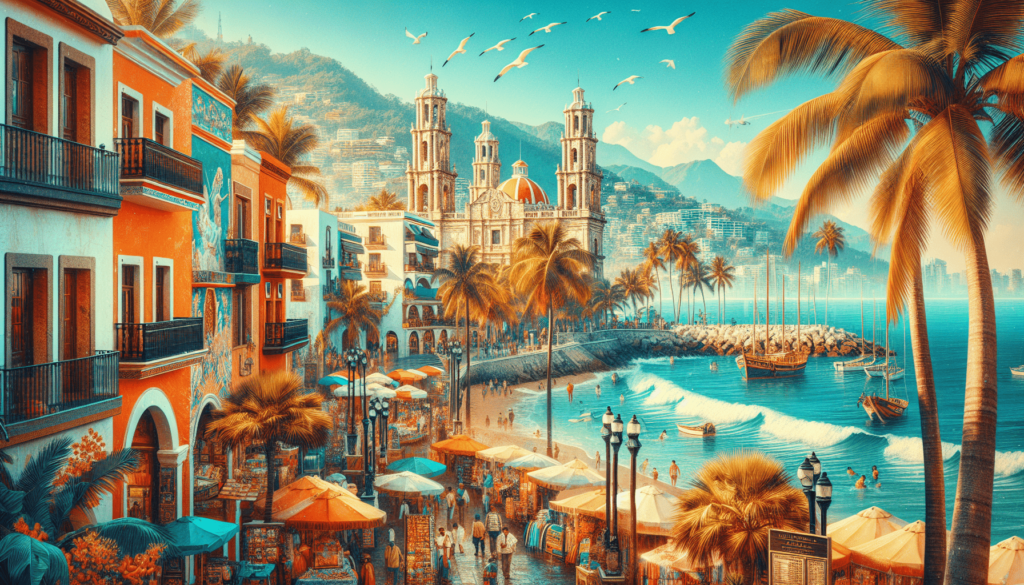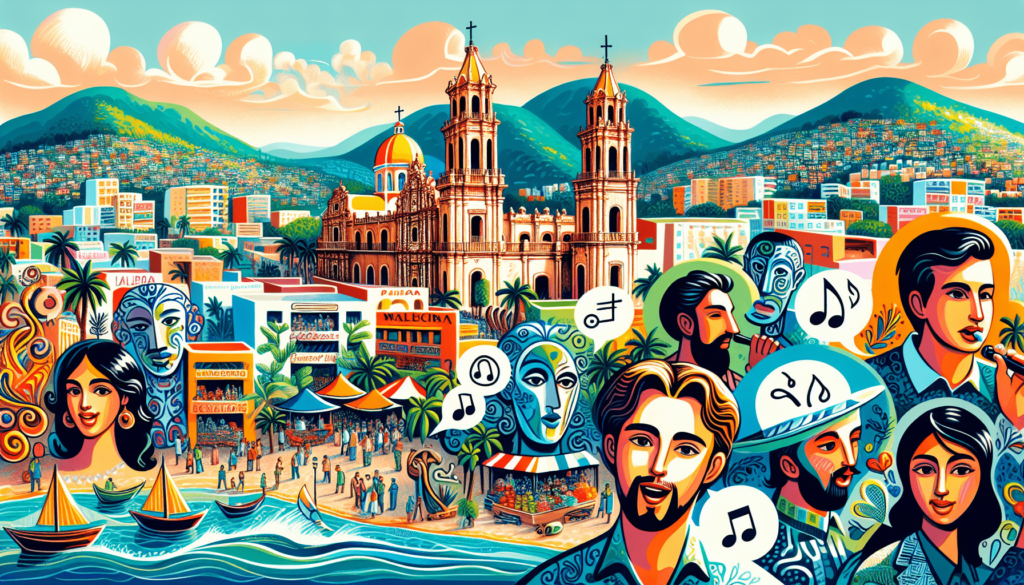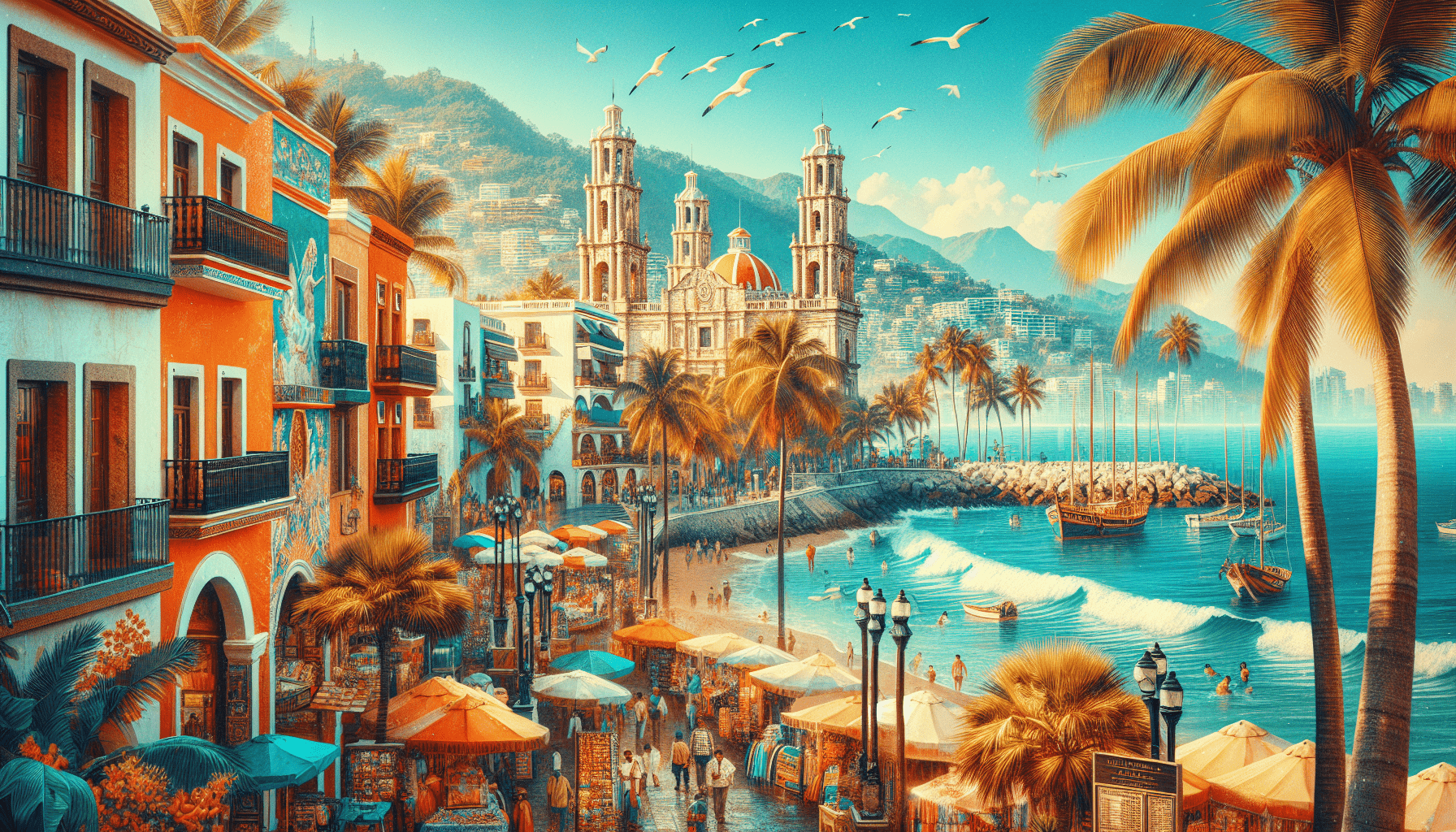So you’re planning a trip to Mexico and you’ve come across the name “Puerto Vallarta,” but you’re not quite sure how to pronounce it. Don’t worry, you’re not alone! In this article, we will help you solve the mystery of how to say this beautiful coastal city’s name correctly. Whether you’re a seasoned traveler or a first-timer, mastering the pronunciation of Puerto Vallarta will not only impress the locals but also enhance your overall experience in this enchanting destination. Let’s dive in and uncover the secrets of saying “Puerto Vallarta” in a way that will make you feel like a true local.
What is Puerto Vallarta?
Puerto Vallarta is a stunning coastal city located on the Pacific coast of Mexico. It is nestled in the state of Jalisco, in the western part of the country. Known for its breathtaking landscapes and vibrant culture, Puerto Vallarta has emerged as a popular tourist destination in recent years.
Geographical location
Situated at the Bay of Banderas, Puerto Vallarta enjoys a strategic location that boasts beautiful beaches, lush jungles, and mesmerizing mountains. The city stretches over 1,300 square kilometers, offering a diverse range of landscapes for visitors to explore.

Popular tourist destination
With its unbeatable combination of natural beauty and cultural richness, it’s no wonder Puerto Vallarta is a hub for tourists from around the world. Whether you’re seeking relaxation on pristine beaches, thrilling water-based activities, or immersing yourself in Mexican culture, Puerto Vallarta has it all. With a wide array of attractions and activities, there is something for everyone in this enchanting city.
Origin and Meaning of the Name
Etymology of ‘Puerto Vallarta’
The name Puerto Vallarta has an interesting etymology. The “Puerto” in Puerto Vallarta translates to “port” in English, hinting at the city’s history as a bustling seaport. As for “Vallarta,” it is derived from the last name of a former governor of Jalisco, Ignacio L. Vallarta. The city was officially renamed Puerto Vallarta in 1918, to honor Vallarta’s contributions to the state.
Pronunciation explanation
The pronunciation of Puerto Vallarta can be a bit of a mouthful for non-native speakers. However, with a little practice, you’ll be able to master the correct pronunciation and impress the locals with your language skills. Let’s dive into the pronunciation guide to help you pronounce Puerto Vallarta accurately.

Pronunciation Guide
General tips for pronouncing Spanish words
Before delving into the specifics of pronouncing Puerto Vallarta, it’s helpful to familiarize yourself with some general tips for pronouncing Spanish words. Spanish pronunciation is fairly consistent, with each letter having a distinct sound. Unlike English, Spanish has fewer exceptions and irregularities, making it easier to grasp the pronunciation rules.
Pronunciation of ‘Puerto’
To pronounce “Puerto” correctly, start with the “P” sound, which is the same as in English. Then, move on to the “u” sound, which is similar to the “oo” sound in “boot.” The “e” is pronounced like the short “e” in “pet,” and the “r” is rolled softly. Finally, the “t” is pronounced as a crisp “t” sound, like in English.
Pronunciation of ‘Vallarta’
When pronouncing “Vallarta,” begin with the “v” sound, which is pronounced like a softer version of the English “v.” The “a” is pronounced like the short “a” sound in “cat.” The double “ll” in Spanish is pronounced as a “y” sound, similar to the “ll” in “million.” Lastly, the “rt” is pronounced as a single flap of the tongue against the roof of the mouth, similar to a soft “d” sound.
Common Mispronunciations
Variations in the pronunciation
Given its unique pronunciation, it’s understandable that there may be variations in the way people say “Puerto Vallarta.” Different accents and dialects can influence the pronunciation, resulting in slight variations. Some may pronounce it more swiftly, while others may emphasize certain sounds. Regardless of the minor differences, the essence of the name remains the same.
Examples of mispronunciations
Mispronunciations of Puerto Vallarta can often occur due to unfamiliarity with the Spanish language. Some common mispronunciations include “Porto Vallarta,” where the “Puerto” is anglicized as “Porto,” and “Vallarta” is pronounced as “Vah-lar-tah.” Another example is pronouncing “Vallarta” as “Val-lar-ta,” with the emphasis on the first syllable instead of the second.
Local Native Language
Indigenous languages in the region
Before the arrival of the Spanish, the region where Puerto Vallarta is now located was inhabited by indigenous populations. The most predominant indigenous group in the area is the Huichol, who have lived in the mountains of Jalisco for centuries. The Huichol people have their own language, which is part of the Uto-Aztecan language family.
Importance of the local native language
While Spanish is the official language of Puerto Vallarta, the local native language, such as Huichol, holds great cultural significance. The language is intertwined with the traditions, beliefs, and stories of the Huichol people, preserving their cultural identity. Efforts are being made to safeguard and revitalize indigenous languages, recognizing their value as an integral part of Puerto Vallarta’s heritage.
Local Dialect and Slang
Distinct dialect features in Puerto Vallarta
Puerto Vallarta has its own distinct dialect, influenced by the local culture and the diverse mix of people who call it home. The local dialect often incorporates words and phrases from indigenous languages, adding a unique flair to the way locals communicate. Additionally, the pronunciation and intonation may vary slightly from standard Spanish due to regional accents and influences.
Common slang words and expressions
To truly immerse yourself in the local atmosphere of Puerto Vallarta, familiarize yourself with some common slang words and expressions. Locals often use colloquial terms to add flavor to their everyday conversations. For example, “chido” is a slang word meaning “cool” or “awesome,” while “cuate” refers to a friend or buddy. Learning these slang words can enhance your interactions and help you connect with the locals on a deeper level.
Historical Background
Early settlement and indigenous influences
The history of Puerto Vallarta dates back to pre-Columbian times when indigenous populations were the first settlers in the region. These early inhabitants left behind archaeological sites, such as petroglyphs and ancient structures, showcasing their rich cultural heritage. The influence of indigenous traditions can still be seen and felt in the city’s customs, art, and celebrations.
Colonization and Spanish influence
Like much of Mexico, Puerto Vallarta experienced colonization when the Spanish arrived in the 16th century. The Spanish brought their language, religion, and customs, significantly shaping the cultural landscape of the area. The fusion of indigenous and Spanish influences created a unique blend of traditions that is still evident today.
Cultural Significance
Traditional customs and celebrations
Puerto Vallarta is a city deeply rooted in tradition and cultural celebrations. Throughout the year, various festivals and events take place, showcasing the region’s rich cultural heritage. From the vibrant Day of the Dead festivities to traditional dances and music performances, Puerto Vallarta offers visitors a chance to immerse themselves in the local culture and witness firsthand the customs that have been passed down through generations.
Art and music scene
Puerto Vallarta is teeming with creativity and artistic expression. The city is home to numerous art galleries, showcasing works from both local and international artists. Strolling through the charming streets, you’ll encounter colorful murals and sculptures that reflect the vibrant art scene. Music also plays a significant role in Puerto Vallarta’s culture, with a variety of genres, such as mariachi and traditional folk music, filling the air during festivals and celebrations.
Travel and Tourism
Popular attractions and landmarks
When it comes to travel and tourism, Puerto Vallarta offers an abundance of attractions and landmarks to explore. The Malecon, a vibrant boardwalk along the shoreline, is a must-visit destination, brimming with shops, restaurants, and street performers. Los Arcos, a natural rock formation rising out of the ocean, is a popular spot for snorkeling and diving enthusiasts. Another iconic landmark is the Church of Our Lady of Guadalupe, a stunning architectural gem that stands as a symbol of the city’s faith.
Beach culture and water activities
Puerto Vallarta’s golden sandy beaches and crystal-clear waters are a key draw for tourists seeking relaxation and adventure. Whether you’re lounging on the sun-soaked shores, snorkeling among colorful marine life, or venturing out on a thrilling jet ski ride, there are endless possibilities for water-based activities. The beach culture in Puerto Vallarta is vibrant, offering beachfront restaurants serving delectable seafood dishes, and beach clubs hosting lively parties with music and dancing.
Language Learning Resources
Online language courses and apps
If you’re interested in learning Spanish or improving your language skills, there are numerous online language courses and apps available to help you achieve your goals. Platforms like Duolingo, Babbel, and Rosetta Stone offer interactive lessons and exercises to practice your pronunciation, vocabulary, and grammar. These resources can be a convenient and effective way to learn the language at your own pace.
Local language schools and classes
For a more immersive experience, consider enrolling in local language schools or classes in Puerto Vallarta. Many institutions offer courses tailored to different proficiency levels, ensuring you receive personalized instruction. These language schools often provide a comprehensive learning experience, incorporating cultural elements into the curriculum, giving you the opportunity to practice the language in real-life situations.
In conclusion, Puerto Vallarta is not only a picturesque tourist destination with stunning landscapes and a vibrant art scene but also a city deeply connected to its cultural roots. From the pronunciation of its name to the local dialect and customs, Puerto Vallarta offers visitors a unique and enriching experience. By delving into the history, culture, and language of Puerto Vallarta, you can fully immerse yourself in the rich tapestry of this captivating city.
